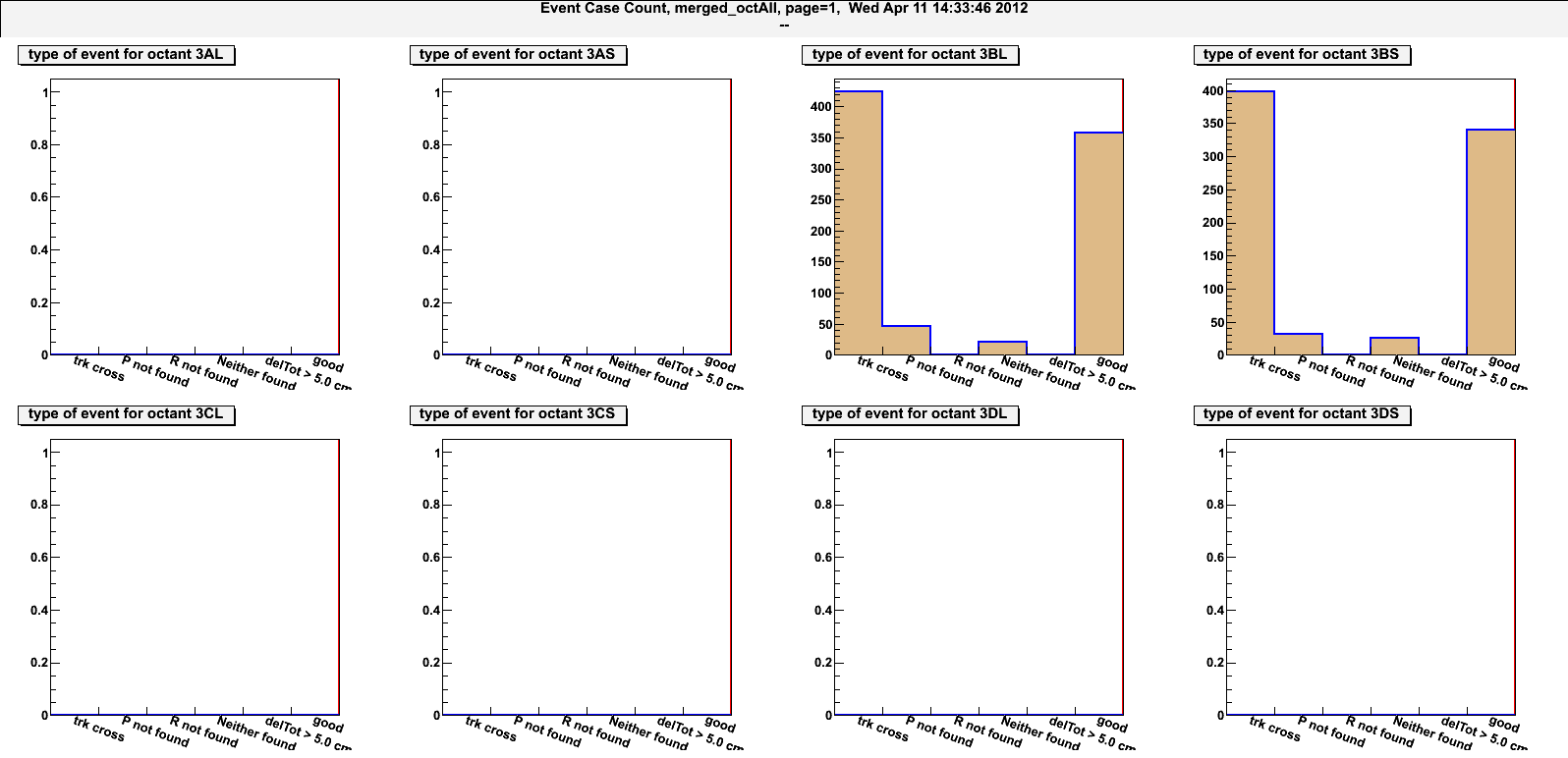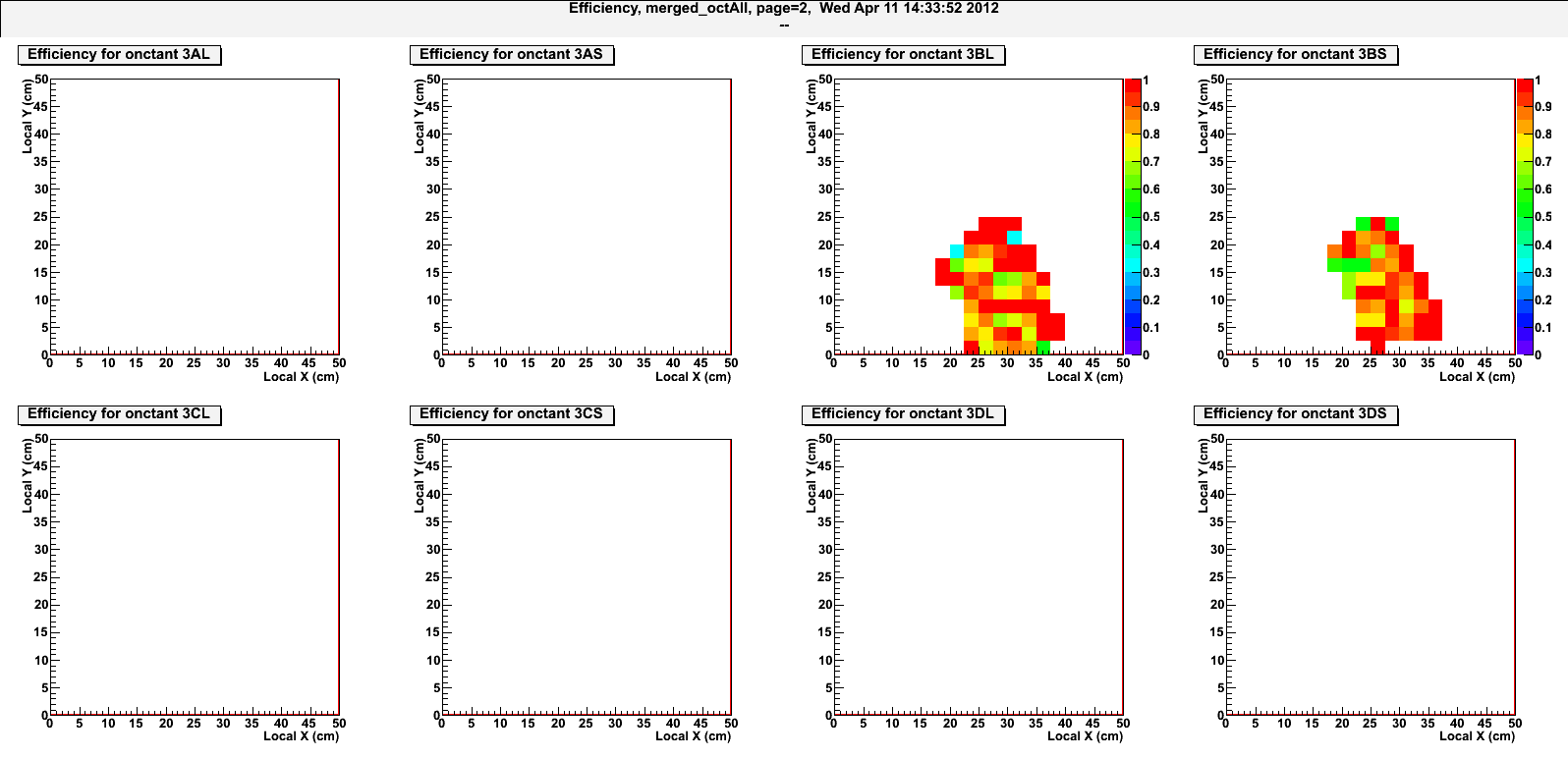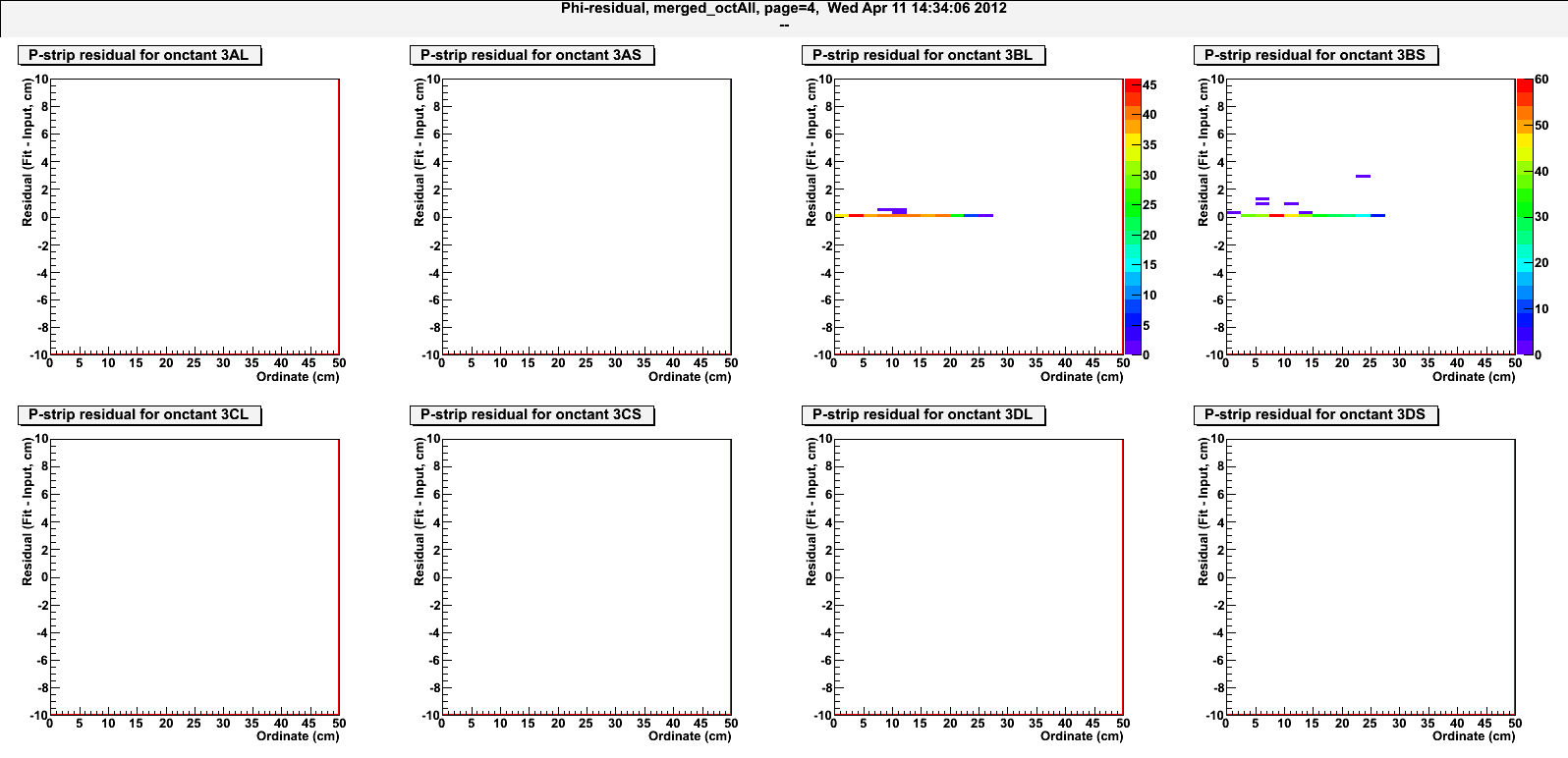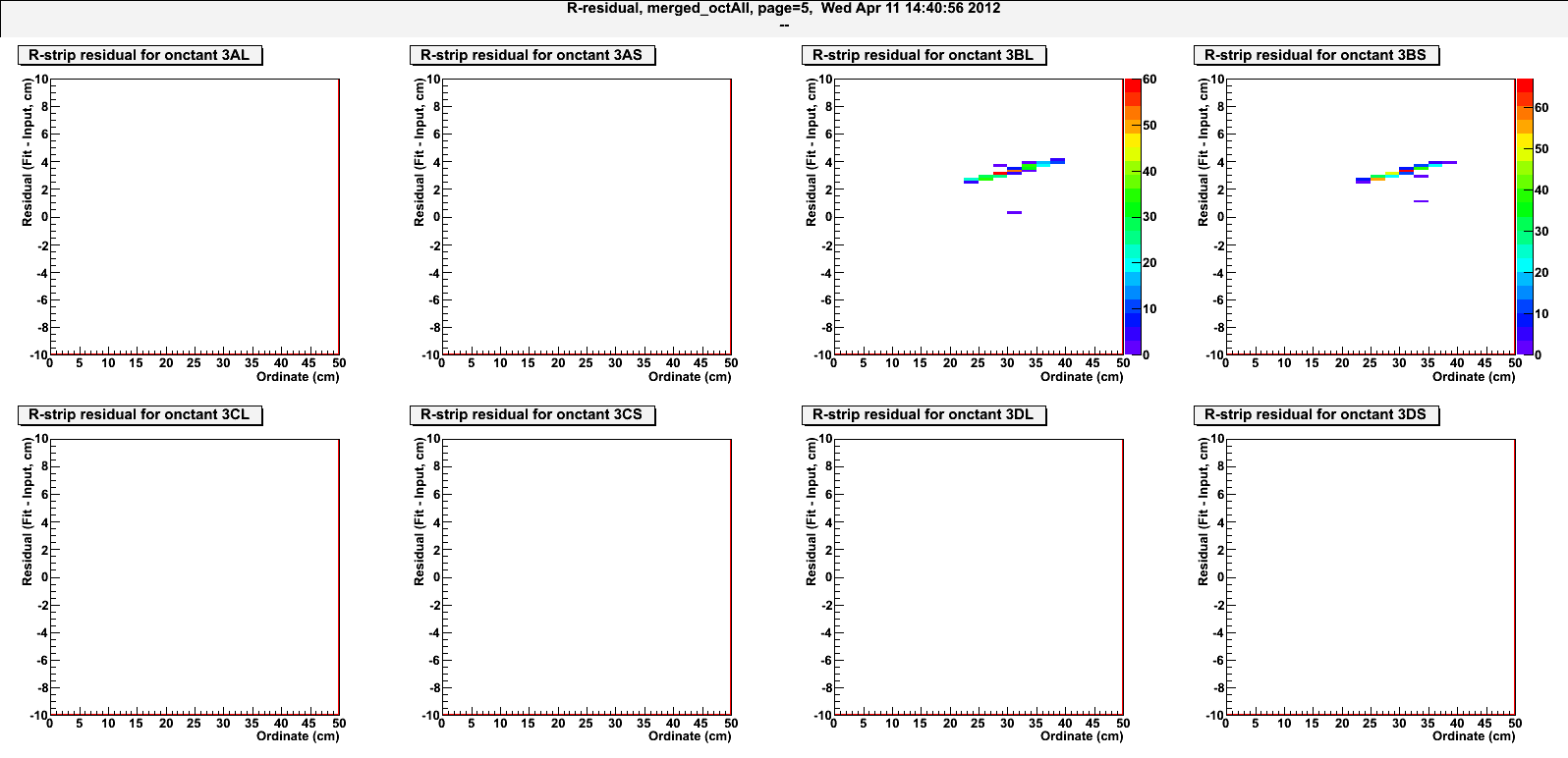- leun's home page
- Posts
- 2013
- 2012
- December (2)
- October (3)
- September (2)
- August (1)
- July (4)
- June (4)
- May (2)
- April (3)
- March (5)
- February (5)
- January (5)
- 2011
- December (3)
- November (3)
- September (5)
- August (2)
- July (2)
- June (3)
- May (4)
- April (4)
- March (2)
- February (4)
- January (2)
- 2010
- December (2)
- November (3)
- October (3)
- September (5)
- August (6)
- July (2)
- June (4)
- May (3)
- April (4)
- March (4)
- February (2)
- January (4)
- 2009
- 2008
- October (1)
- My blog
- Post new blog entry
- All blogs
Efficiency calculation for single e+ e- simu sample
M-C Efficiency for Single Electron/Positron Sample
This is a test result for calculating the efficiency based on single e+ e- simulation sample. Each particle was generated at three different pT (1, 2, and 5 GeV), but I simply summed over all particle and all pT.
Efficiency was calculated for disc 3, by ommiting the clusters from disc 3 during the helix fit, and later checking to see if we find a cluster in disc 3 that is consistent with the fit.
All the details of the fit is the same as what Jan has been running.
For now, the distance between the cluster and the fit crossing required to be considered "consistent" is 5 cm, and this arge value was used mainly because I seem to not know the exact Z value of the disc to use.
The statistics are very limited (total about 1.2K events), and it seems that the particles were aimed only at the quadrant B.
Fig. 1. Event Counter (how many times the fit crossed the octant, how many times we didn't find clusters, and how many times we did find the cluster)

It seems that the main source of loss for this simple simulation is the efficiency for cluster finding.
Fig. 2. Efficiency for each octant (but with limited statistics. I did not put in mimimum number of event cut, as the point was to test the code)

Each bin has ~10 events, so this shouldn't be taken too seriously. Coordinates are rotated to make it look the same for each octant.
Fig. 3. Residual for Phi clusters

Fig. 4. Residual for R clusters

Most likely the Z values I'm using for the discs are not correct. It seems that the fit thinks the Z coordinate for disc 3 is laarger than what is on the input side. I'm looking into this issue.
Overall, the code seems to be doing something reasonable, and it needs to be tested on bigger data/simulation set.
- leun's blog
- Login or register to post comments
